
Cubism is an early-20th-century avant-garde art movement that revolutionized European painting and sculpture, and inspired related movements in music, literature and architecture. In Cubist artwork, objects are analyzed, broken up and reassembled in an abstracted form—instead of depicting objects from a single viewpoint, the artist depicts the subject from a multitude of viewpoints to represent the subject in a greater context. Cubism has been considered the most influential art movement of the 20th century. The term is broadly used in association with a wide variety of art produced in Paris or near Paris (Puteaux) during the 1910s and throughout the 1920s.

New materials in 20th-century art were introduced to art making from the very beginning of the century. The introduction of new materials and heretofore non-art materials helped drive change in art during the 20th century. Traditional materials and techniques were not necessarily displaced in the 20th century. Rather, they functioned alongside innovations that came with the 20th century. Such mainstays as oil-on-canvas painting, and sculpting in traditional materials continued right through the 20th century into the 21st century. Furthermore, even "traditional" materials were greatly expanded in the course of the 20th century. The number of pigments available to artists has increased both in quantity and quality, by most reckoning. New formulations for traditional materials especially the commercial availability of acrylic paint have become widely used, introducing initial issues over their stability and longevity.

Modern art includes artistic work produced during the period extending roughly from the 1860s to the 1970s, and denotes the styles and philosophies of the art produced during that era. The term is usually associated with art in which the traditions of the past have been thrown aside in a spirit of experimentation. Modern artists experimented with new ways of seeing and with fresh ideas about the nature of materials and functions of art. A tendency away from the narrative, which was characteristic for the traditional arts, toward abstraction is characteristic of much modern art. More recent artistic production is often called contemporary art or postmodern art.
The year 2002 in art involves various significant events.
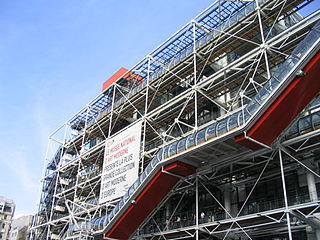
The Musée National d'Art Moderne is the national museum for modern art of France. It is located in Paris and is housed in the Centre Pompidou in the 4th arrondissement of the city. In 2021 it ranked 10th in the List of most visited art museums in the world, with 1,501,040 visitors. It is one of the largest museums for modern and contemporary art.

The Salon d'Automne, or Société du Salon d'automne, is an art exhibition held annually in Paris, France. Since 2011, it is held on the Champs-Élysées, between the Grand Palais and the Petit Palais, in mid-October. The first Salon d'Automne was created in 1903 by Frantz Jourdain, with Hector Guimard, George Desvallières, Eugène Carrière, Félix Vallotton, Édouard Vuillard, Eugène Chigot and Maison Jansen.
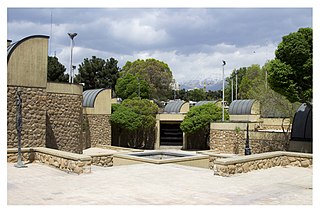
Tehran Museum of Contemporary Art,, also known as TMoCA, is among the largest art museums in Tehran and Iran. It has collections of more than 3,000 items that include 19th and 20th century's world-class European and American paintings, prints, drawings and sculptures. TMoCA also has one of the greatest collections of Iranian modern and contemporary art.
Events from the year 1913 in art.
Sherrie Levine is an American photographer, painter, and conceptual artist. Some of her work consists of exact photographic reproductions of the work of other photographers such as Walker Evans, Eliot Porter and Edward Weston.

Bruno Bischofberger is a Swiss art dealer and collector.
Sidney Janis was a wealthy clothing manufacturer and art collector who opened an art gallery in New York in 1948. His gallery quickly gained prominence, for he not only exhibited work by the Abstract Expressionists, but also European artists such as Pierre Bonnard, Paul Klee, Joan Miró, and Piet Mondrian. As the critic Clement Greenberg explained in a 1958 tribute to Janis, the dealer's exhibition practices had helped to establish the legitimacy of the Americans, for his policy "not only implied, it declared, that Jackson Pollock, Willem de Kooning, Franz Kline, Phillip Guston, Mark Rothko, and Robert Motherwell were to be judged by the same standards as Matisse and Picasso, without condescension, without making allowances." Greenberg observed that in the late 1940s "the real issue was whether ambitious artists could live in this country by what they did ambitiously. Sidney Janis helped as much as anyone to see that it was decided affirmatively."
The Art of This Century gallery was opened by Peggy Guggenheim at 30 West 57th Street in Manhattan, New York City on October 20, 1942. The gallery occupied two commercial spaces on the seventh floor of a building that was part of the midtown arts district including the Museum of Modern Art, the Museum of Non-Objective Painting, Helena Rubinstein's New Art Center, and numerous commercial galleries. The gallery exhibited important modern art until it closed in 1947, when Guggenheim returned to Europe. The gallery was designed by architect, artist, and visionary Frederick Kiesler.

Thomas E. Ammann was a leading Swiss art dealer in Impressionist and twentieth century art, and a collector of post-war and contemporary art.
Twentieth-century art—and what it became as modern art—began with modernism in the late nineteenth century.
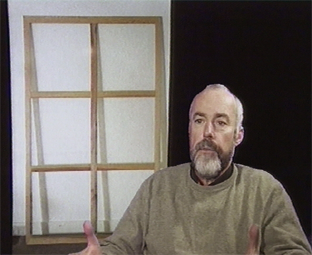
Daniel Dezeuze is a French artist and a founding member of the French group of artists called Supports/Surfaces. This group started to form in 1966. Their common concern was a desire to deconstruct painting in order to re-examine its history and question its nature. Colour is a fundamental question in many of their works. They frequently used non-traditional materials and referred to other non-western cultures.
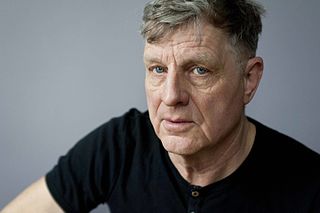
Rainer Fetting is a German painter and sculptor.
The Shock of the New is an eight-part documentary television series about the development of modern art written and presented in 1980 by Robert Hughes for the BBC, in association with Time-Life Films. It was produced by Lorna Pegram, who also directed three of the episodes.
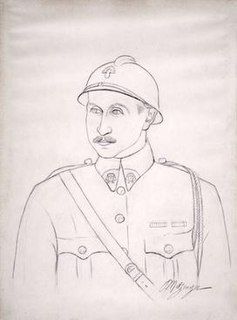
Léonce Rosenberg was an art collector, writer, publisher, and one of the most influential French art dealers of the 20th century. His greatest impact was as a supporter and promoter of the cubists, especially during World War I and in the years immediately after.

Daniel J. Robbins was an American art historian, art critic, and curator, who specialized in avant-garde 20th-century art and helped encourage the study of it. Robbins' area of scholarship was on the theoretical and philosophical origins of Cubism. His writings centered on the importance of artists such as Albert Gleizes, Jean Metzinger, Henri Le Fauconnier and Jacques Villon. He was a specialist in early Modernism, writing on Salon Cubists and championed contemporaries such as Louise Bourgeois and the Color Field painters. Art historian Peter Brooke referred to Robbins as "the great pioneer of the broader history of Cubism".












